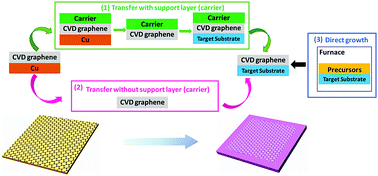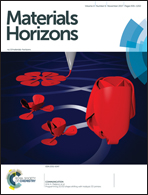Advances in transferring chemical vapour deposition graphene: a review
Abstract
The unique two-dimensional structure and outstanding electronic, thermal, and mechanical properties of graphene have attracted the interest of scientists and engineers from various fields. The first step in translating the excellent properties of graphene into practical applications is the preparation of large area, continuous graphene films. Chemical vapour deposition (CVD) graphene has received increasing attention because it provides access to large-area, uniform, and continuous films of high quality. However, current CVD synthetic techniques utilize metal substrates (Cu or Ni) to catalyse the growth of graphene and post-growth transfer of the graphene film to a substrate of interest is critical for most applications such as electronics, photonics, and spintronics. Here we discuss recent advances in the transfer of as-grown CVD graphene to target substrates. The methods that afford CVD graphene on a target substrate are summarized under three categories: transfer with a support layer, transfer without a support layer, and direct growth on target substrates. At present the first two groups dominate the field and research efforts are directed towards refining the choice of the support layer. The support layer plays a vital role in the transfer process because it has direct contact with the atomically thin graphene surface, affecting its properties and determining the quality of the transferred graphene.

- This article is part of the themed collections: Recent Review Articles and Celebrating Excellence in Research: Women of Materials Science


 Please wait while we load your content...
Please wait while we load your content...